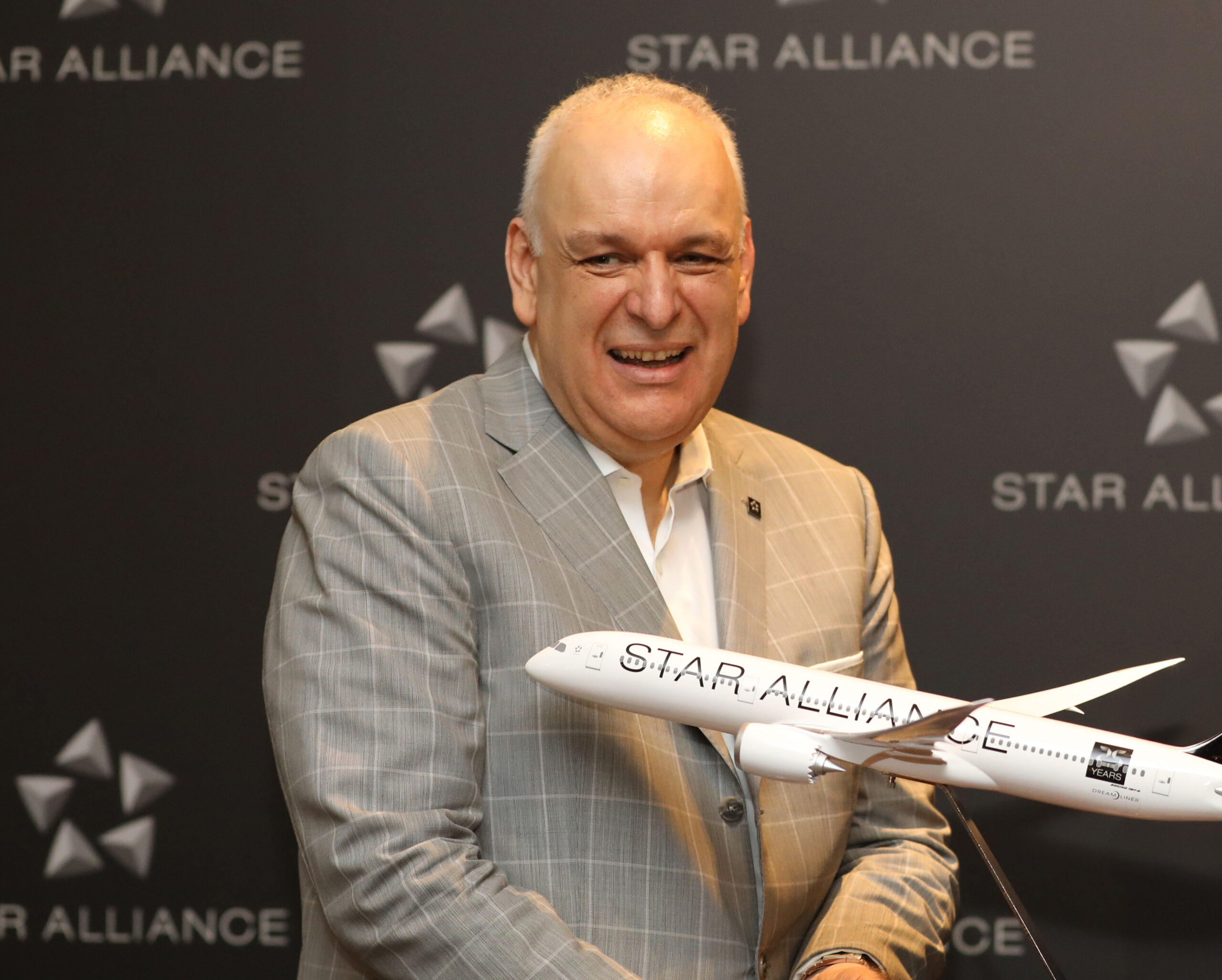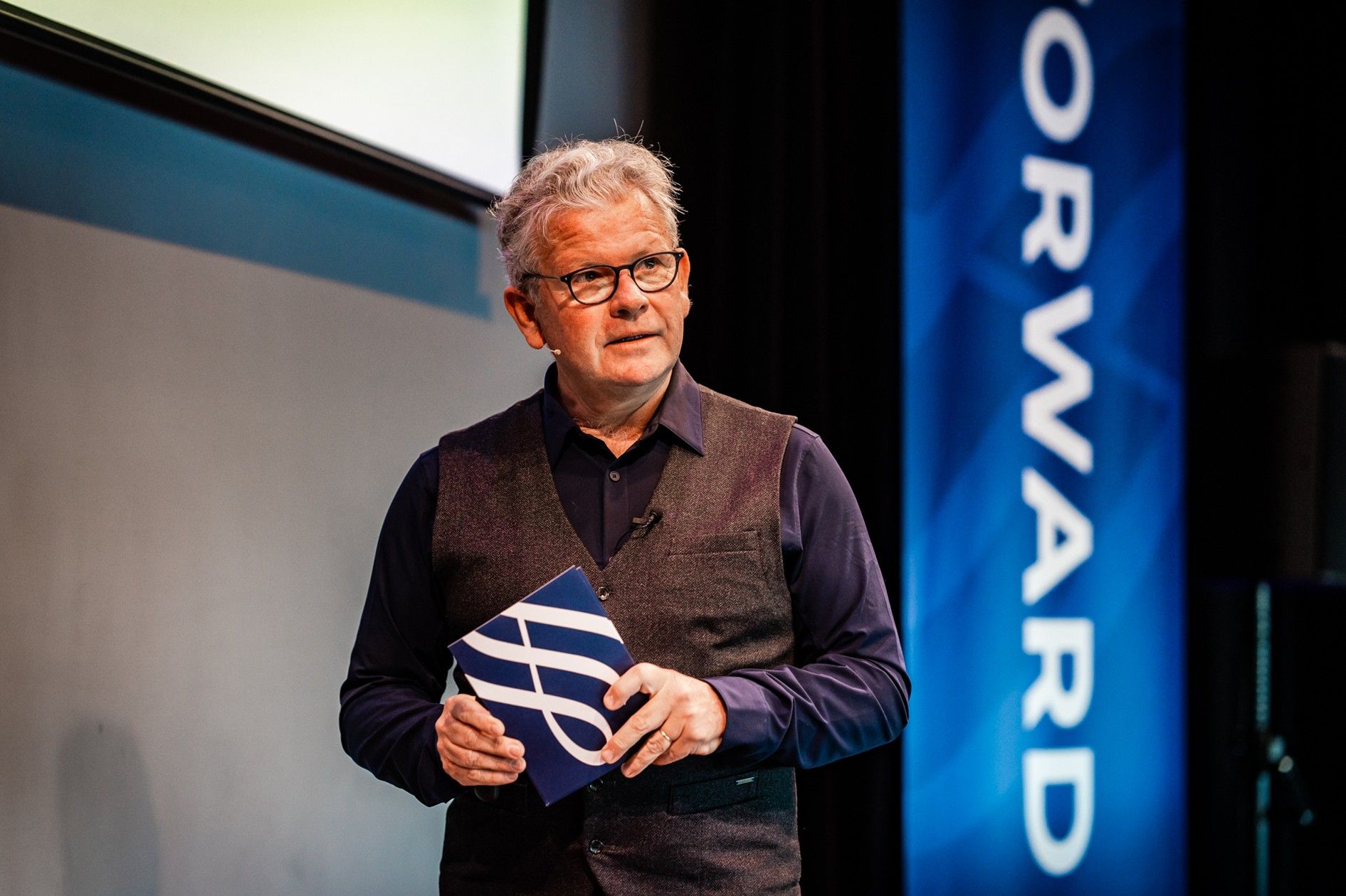Behind the Scenes with David Pacey: Transforming Korean Air’s Inflight and Lounge Services
The airline’s head of inflight service discusses his efforts to enhance the passenger experience by combining luxury hospitality with aviation expertise
October 14, 2024
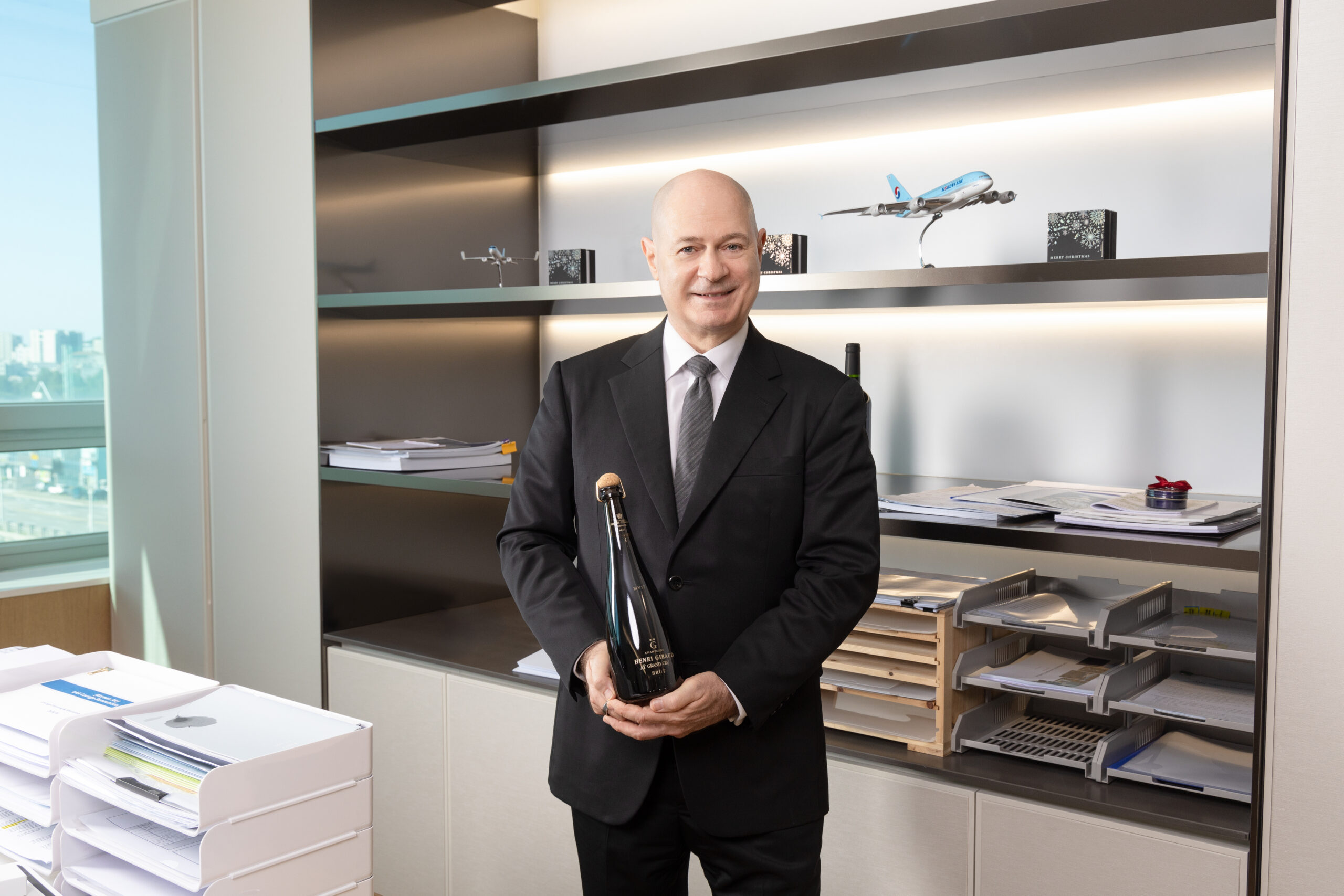
Photo: Courtesy of Korean Air
Korean Air, the flag carrier of South Korea, is celebrating 55 years of passenger services while poised for transformative changes. As the airline prepares for an imminent merger with its long-time competitor, Asiana Airlines, it is also on its way to unveiling its innovative Prestige 2.0 Business Class product for flights to North America, with the inaugural flight to Vancouver successfully landing in early October.
In addition, Korean Air is on track to expand and remodel its current lounges at Seoul Incheon, and constructing a brand-new lounge at New York-JFK’s upcoming Terminal One.
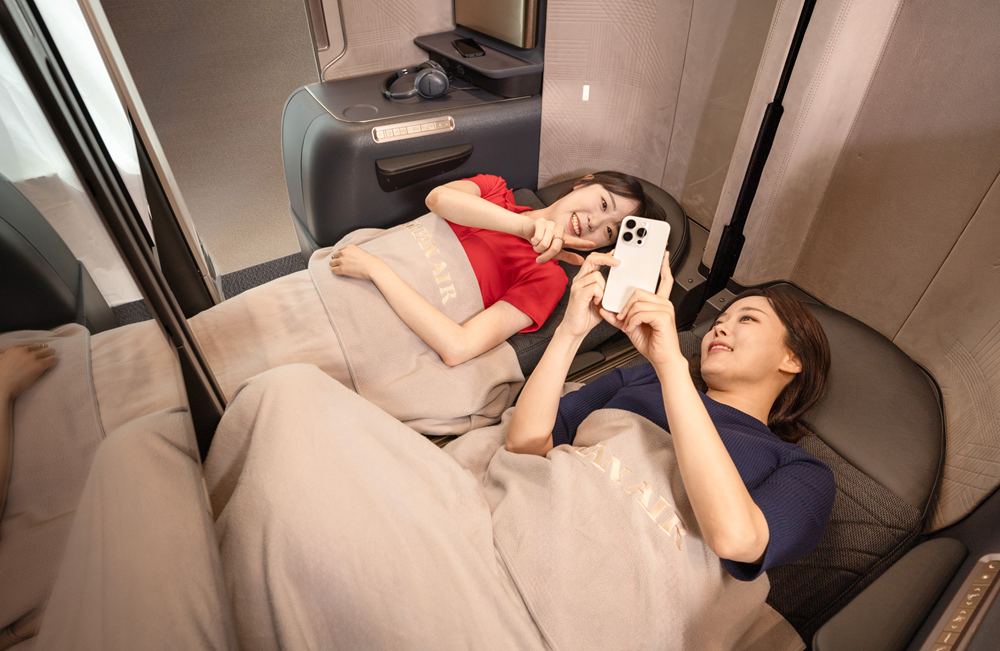
Photo: Boeing 787-10, Prestige Class 2.0. Courtesy of Korean Air
At the helm of most of these exciting developments is David Pacey, a seasoned hospitality professional who made a bold leap from luxury hotels to aviation as the Executive Vice President and Chief of In-flight Service and Lounges at Korean Air.
His arrival came at a crucial moment for the airline, transforming from a modest regional carrier with just eight planes in 1969 into a global aviation leader with more than 150 aircraft.
I sat with Pacey in his office in Seoul, where he shared insights into his remarkable career and the challenges of leading the airline’s in-flight services and lounges. With over 35 years of experience in luxury hotels across Asia, Pacey now faces the task of translating that expertise into the sky.
Pacey’s mission is to elevate Korean Air’s service to match the personalized care found in the world’s finest hotels. But how does he uphold such high standards in an ever-evolving industry?
Our conversation unveiled the behind-the-scenes complexities of airline operations and Pacey’s vision for the future of hospitality at 35,000 feet as Korean Air prepares to embark on its next century of excellence.
Hi David, thanks for having us here in your office in Seoul. You have a remarkable background in customer service-oriented roles, including as Area Vice President and General Manager of the Grand Hyatt Manila Hotel and Residences, where you led the pre-opening efforts. With over 35 years in hospitality, including nearly three decades with Hyatt Hotels in Asia, what inspired you to transition to the aviation industry and take on such a prestigious role at Korean Air?
I started my hospitality journey as a waiter at Hyatt Regency Phoenix. I was fortunate to have exceptional leaders and role models who believed in me and invested in my growth. Over the years, my career with Hyatt took me to some of the most remarkable hotels in the Asia Pacific, providing experiences that shaped my professional and personal life.
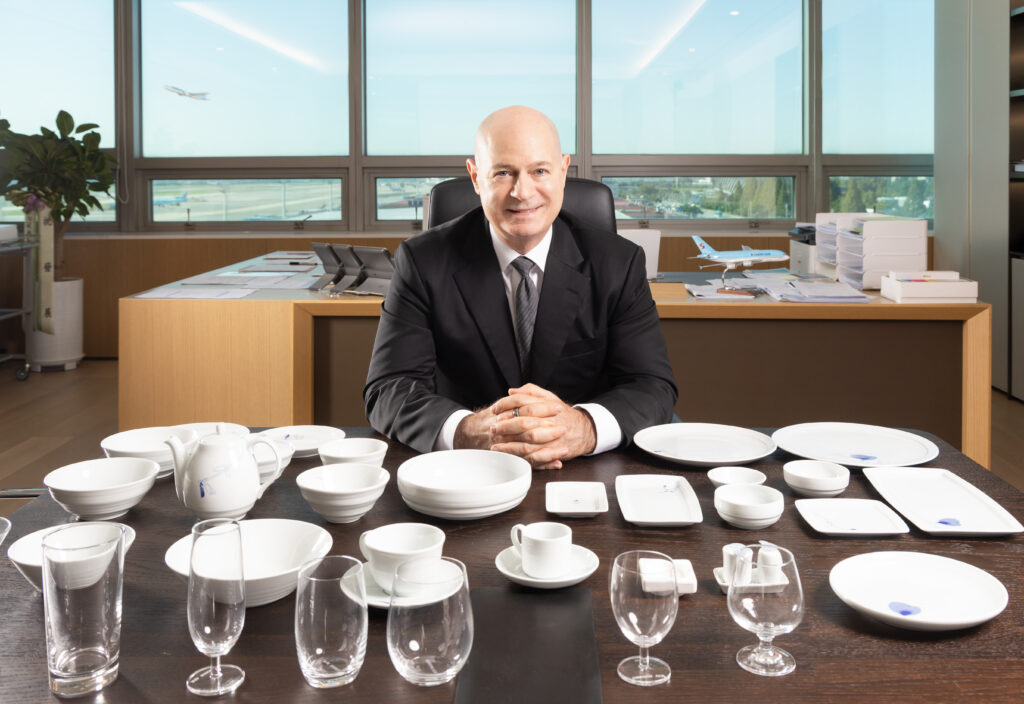
Photo: Courtesy of Korean Air
One of the highlights was living in Seoul, South Korea, where I had the incredible opportunity to work with Korean Air Chairman and CEO Walter Cho during my tenure as the opening General Manager of Hyatt Regency Incheon, currently rebranded as Grand Hyatt Incheon.
When the opportunity to join Korean Air presented itself, especially during such an exciting time of transformation for the airline, it felt like the perfect step forward—a chance to contribute to something special while applying the insights and experiences I had gained along the way.
From your experience, what are the key differences between the hospitality industry and the airline industry, particularly regarding customer service?
In my view, there is no difference. The core concept of service in both the hospitality and airline industries is about creating genuine human connections. Whether in a hotel or on a flight, our goal is to build genuine relationships with our guests. It’s not just about providing a service—it’s about creating an experience that truly resonates with people on a deeper level. When we achieve that, we leave a lasting impression, inviting them to be part of our story and making them feel like valued partners, not just customers.
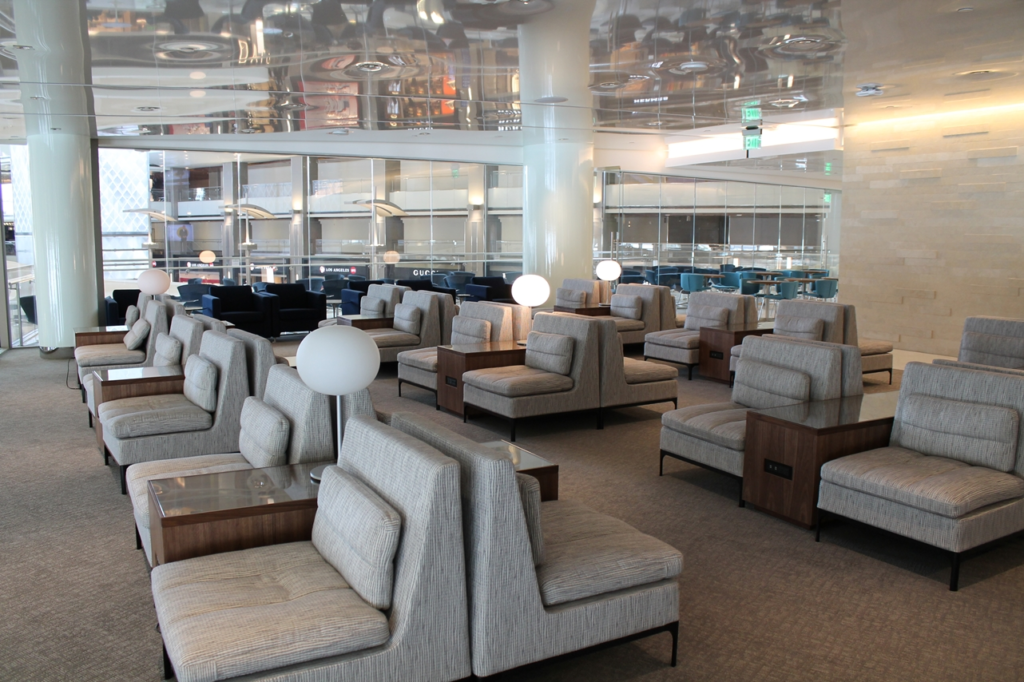
Photo: Korean Air Lounge, LAX. Courtesy of TheDesignAir
What makes both the hospitality and airline industries unique is that the interactions are never purely transactional. We’re not simply fulfilling a need; we’re cultivating trust and building relationships. In both spaces, it’s essential that our guests feel heard, understood, and appreciated—creating a sense of belonging. Ultimately, it’s about helping them feel like they’re part of our journey, where we care about them as individuals and foster a sense of connection and mutual trust.
Could you tell us about Korean Air’s current food and beverage program? How are you collaborating with renowned chefs and premium brands — including Amenity Kits — to elevate the inflight experience?
Our menus support our commitment to providing a world-class in-flight experience. We offer a diverse selection of Eastern and Western dishes, focusing on promoting Korean cuisine globally. Signature items such as bibimbap, bibim noodles, and tteokguk (rice cake soup) highlight our dedication to sharing Korea’s rich culinary traditions with our passengers.
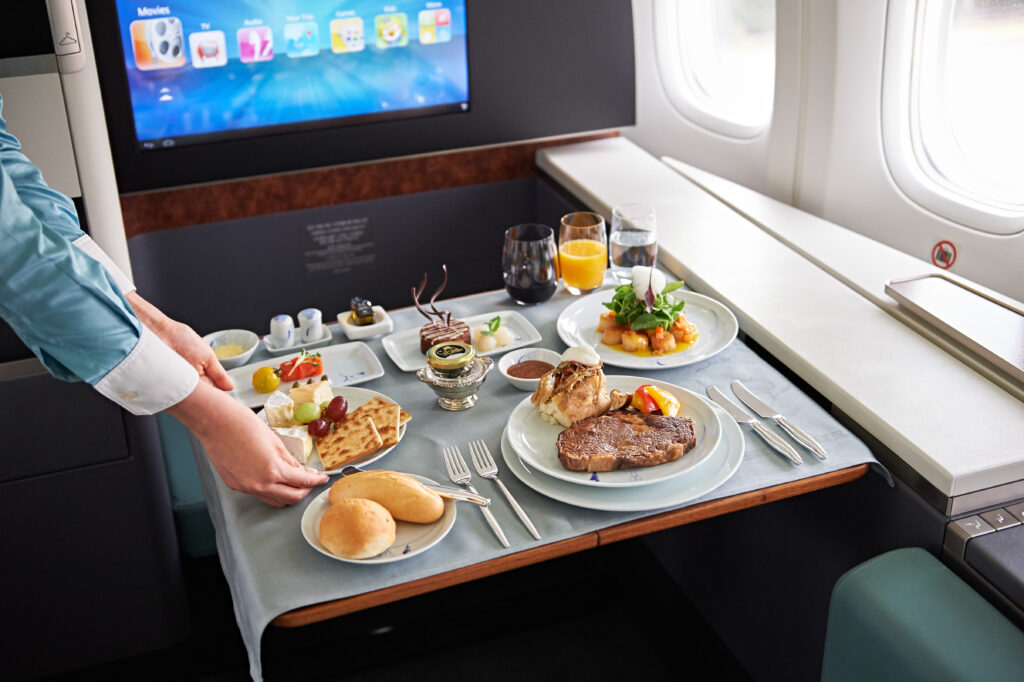
Photo: B747-8i. Photo: Courtesy of Korean Air
To elevate our in-flight dining experience, we partnered with renowned chef Kim Se-Kyung, owner of Cesta and HUE 135 here in Seoul, to further refine and enhance our menu. This collaboration brings fresh perspectives and innovative approaches to our offerings, ensuring passengers enjoy high-quality meals crafted with expert attention to detail. Our intention in partnering with Chef Kim is to reimagine airline food, bringing a fine dining experience on board.
What are some of the iconic dishes and beverages that Korean Air is known for? Are there any signature cocktails or culinary creations passengers can look forward to?
Bibimbap has long been one of Korean Air’s signature dishes, earning the prestigious Mercury Award from IFCA upon its debut. It remains a passenger favorite, thanks to our focus on quality and the use of fresh, seasonal ingredients that change throughout the year.
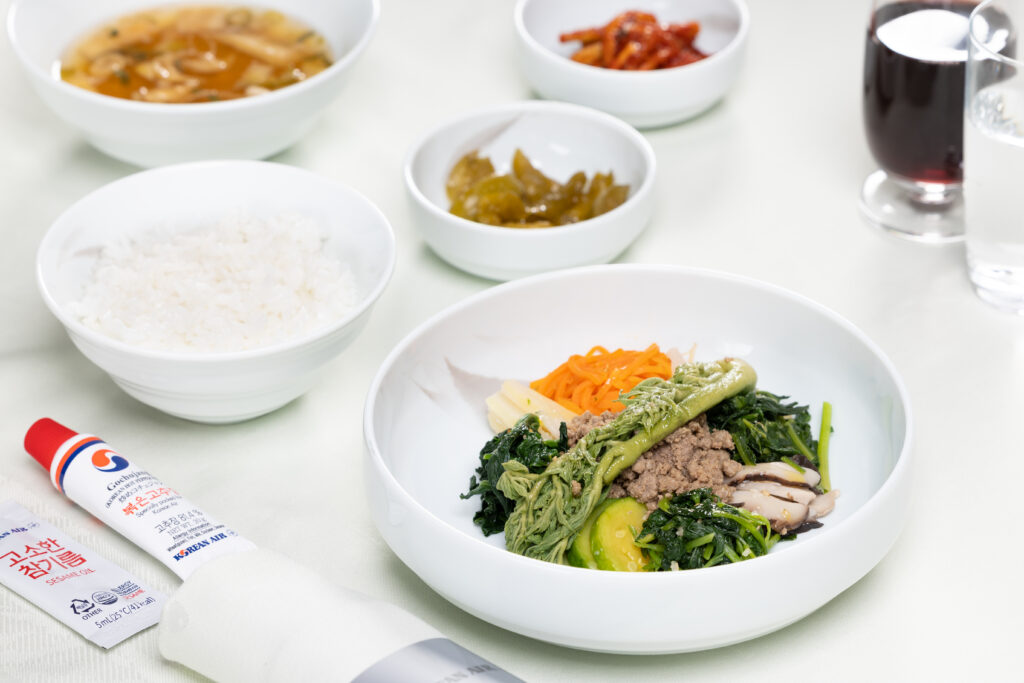
Photo: Bibimbap. Courtesy of Korean Air
To cater to our passengers’ diverse tastes, we are continuously evolving our bibimbap offerings, exploring new variations to further enhance this iconic dish.
We also recently introduced K-Temple-inspired vegan dishes, reflecting our commitment to offering innovative, culturally rich, and inclusive dining experiences, such as pyogo-beoseot bibimbap (burdock rice with spicy shiitake mushrooms).
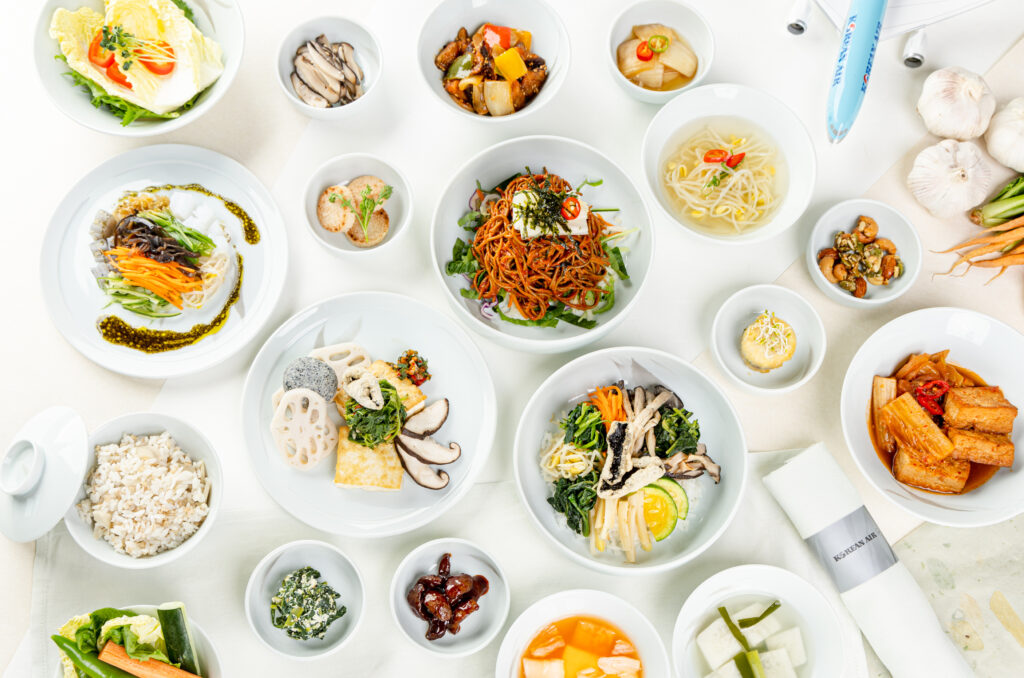
Photo: Vegan meal service. Courtesy of Korean Air
In collaboration with Mr. Marc Almert, 2019 World Sommelier Champion, we completely revamped our wine selection, moving away from a wine list heavily weighted with Old World wines to now offering a selection of high-quality wines from all over the world through diverse and thoughtful sourcing. This significant shift from our previous approach has produced a wine portfolio we are particularly proud of.
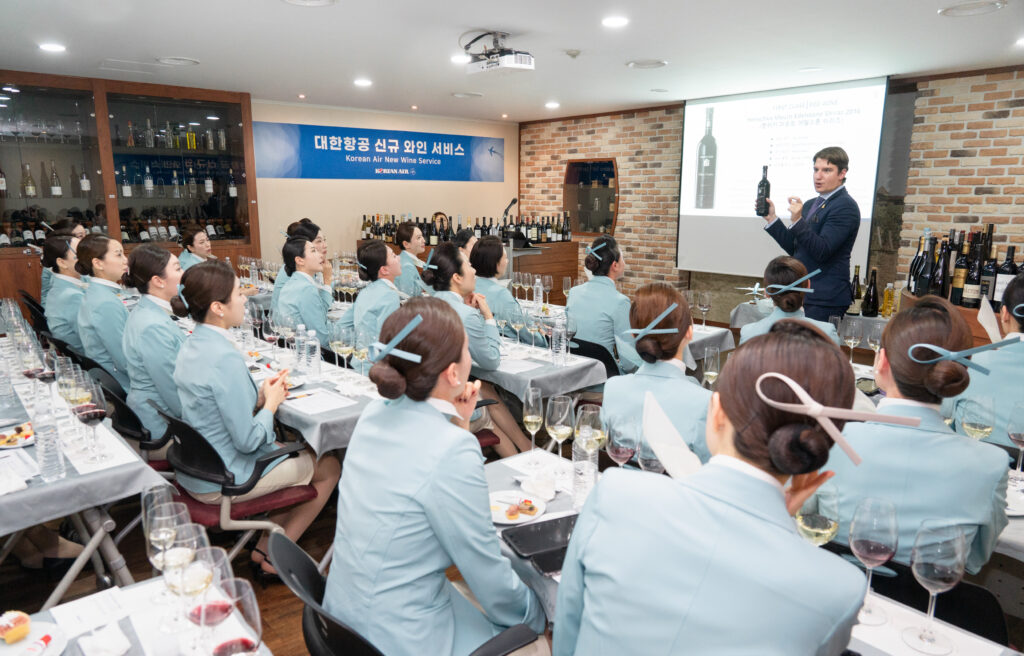
Photo: Training with Marc Almert. Courtesy of Korean Air
Rather than highlighting a single signature dish or drink, our focus is on delivering exceptional service across all areas of in-flight hospitality. Stay tuned as we are currently refining our menus. There are certainly more creations passengers can look forward to soon!
In 2013, I had my first taste of the Bibimbap dish while flying with Korean Air, and I was blown away by it. Recently, I tried it again on a flight from Atlanta and was equally impressed. Congratulations on maintaining the quality of this dish over time! Now, onto beverages. Champagne service is a hallmark of luxury travel. I’m curious about what brands of Champagne Korean Air serves in its lounges and onboard.
Korean Air lounges currently feature a carefully curated selection of champagnes, offering a variety of styles to complement our menu. Our First Class lounge at Incheon International Airport serves three exceptional champagnes: Piper Heidsieck Essential, Vollereaux Rosé, and Nicolas Feuillatte Grande Réserve.
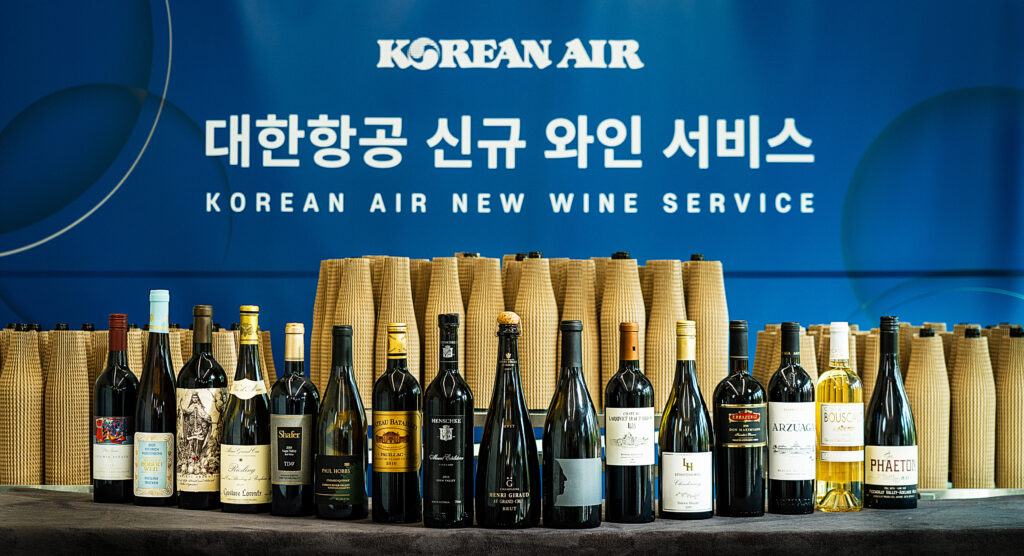
Photo: Courtesy of Korean Air
Our key international lounges also provide premium champagne selections, with the New York JFK lounge offering Nicolas Feuillatte Réserve Brut and the Los Angeles lounge serving Nicolas Feuillatte Réserve Exclusive Rosé.
Onboard, all wines were handpicked through blind tastings led by Marc Almert and Sangjun (James) Lee, Korean Air’s sommelier. They specifically select wines with rich aromas and fruity flavors to offset the diminished sense of taste in a low-humidity, high-altitude cabin environment.
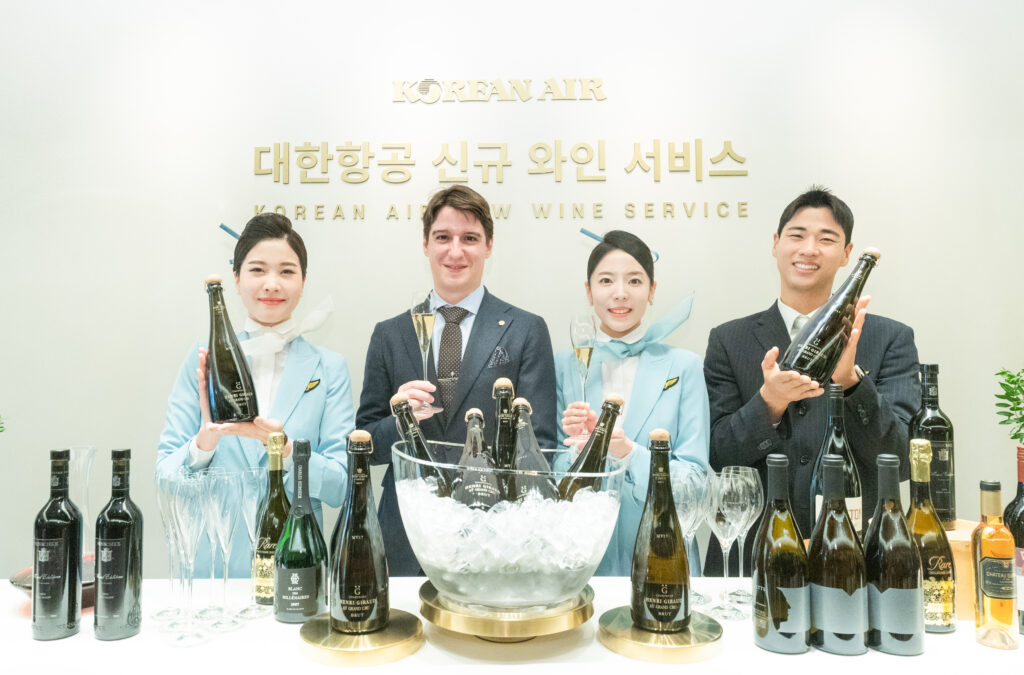
Photo: Courtesy of Korean Air
Our wine service is highlighted by top-tier champagnes such as Henri Giraud MV, praised by renowned critics Robert Parker and Jancis Robinson. Additionally, we feature vegan champagnes: Charles Heidsieck Blanc des Millénaires, Devaux Stenope, and Palmer & Co Amazone de Palmer, aligning with the growing demand for eco-friendly choices—earning widespread appreciation from our First and Prestige Class passengers.
Excellent choices! I’m a big fan of Charles Heidsieck champagne, and its Blanc des Millénaires is an outstanding choice to have while flying. Now, are Korean Air’s flight attendants trained by sommeliers? Do you offer a dedicated sommelier service onboard your flights?
Marc and Sangjun lead an in-depth wine training program for our cabin crew, focusing on grape varietals, the unique factors of the taste of wine in the air—such as changes in olfactory senses, high temperatures, low humidity, ambient noises—along with best practices for storage, presentation, and pairings with our menus.
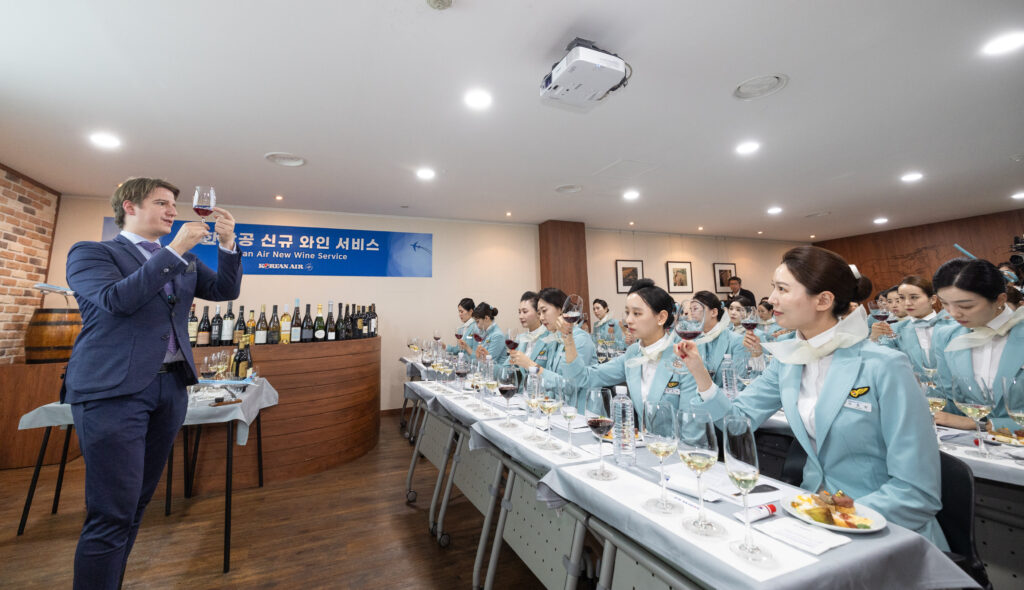
Photo: Courtesy of Korean Air
This class was essential for any flight attendant aspiring to work in upper-class cabins, giving them the confidence to be our wine ambassadors.
Moving on to your lounge operations—which I know are tremendously challenging—how many lounges does Korean Air operate globally, and what are the unique features of these lounges that set them apart from others?
Korean Air operates a total of 11 lounges worldwide, including four in Korea—Seoul Incheon, Seoul Gimpo, Busan, and Jeju—and seven international locations in Los Angeles, New York, Honolulu, Narita, Osaka, Fukuoka, and Nagoya.
At Incheon International Airport, our hub, we offer a distinctive experience for high-mileage travelers. In addition to the traditional First and Prestige Class lounges, we provide the exclusive Miler Club lounge, designed specifically for our most frequent flyers.
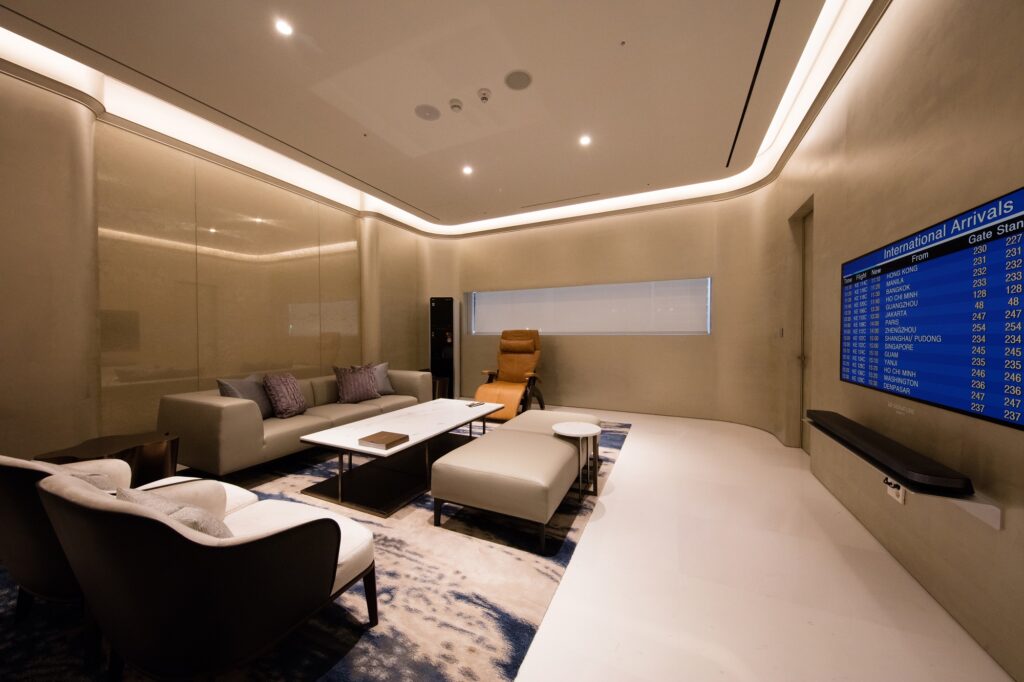
Photo: First Class lounge, Incheon Airport. Courtesy of Korean Air
The Incheon First Class Lounge has also been awarded Skytrax’s prestigious 5-star rating, a testament to its exceptional service and amenities.
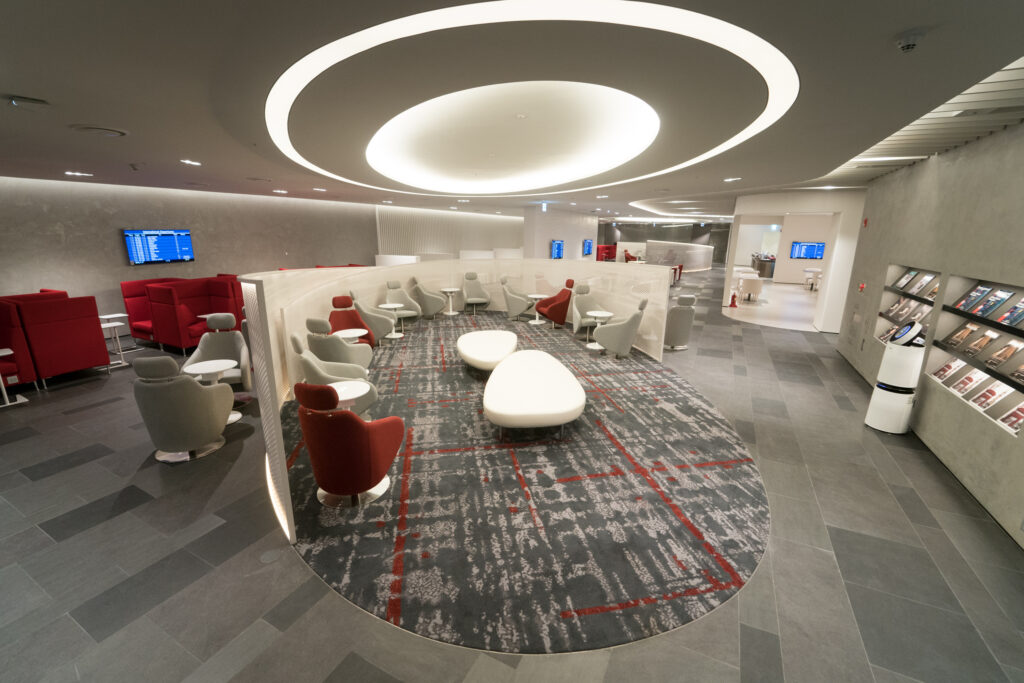
Photo: Miler Club lounge, Incheon Airport. Courtesy of Korean Air
What sets our lounges apart is the focus on premium dining experiences, particularly at our Incheon location, where food and beverages are catered by the Grand Hyatt Incheon. This includes signature Korean dishes like bulgogi, galbi-jjim, and jeyuk-bokkeum, which offer passengers an authentic taste of Korean cuisine, as well as signature dishes from the hotel.
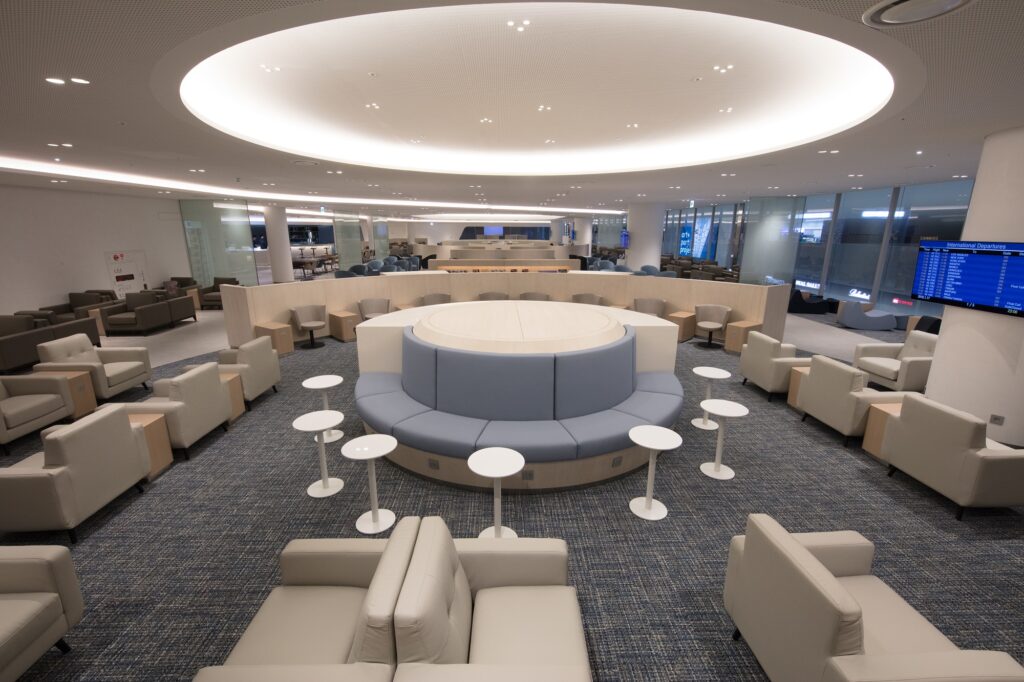
Photo: Prestige Class lounge, Incheon Airport. Courtesy of Korean Air
With my appointment, we formed a dedicated team to oversee all lounge operations to ensure our lounges consistently deliver the highest standard of service, setting Korean Air’s lounges apart on the global stage.
One important fact we can’t leave behind is that Korean Air has a strong partnership with Delta Air Lines. Have there been any collaborative efforts in lounge operations or customer service initiatives with Delta?
Yes. Korean Air has a close partnership with Delta Air Lines, which includes collaborative efforts in lounge operations and customer service initiatives. Delta recently opened a new Delta One Lounge at New York JFK, and is planning to open lounges at Los Angeles and Boston Logan soon.
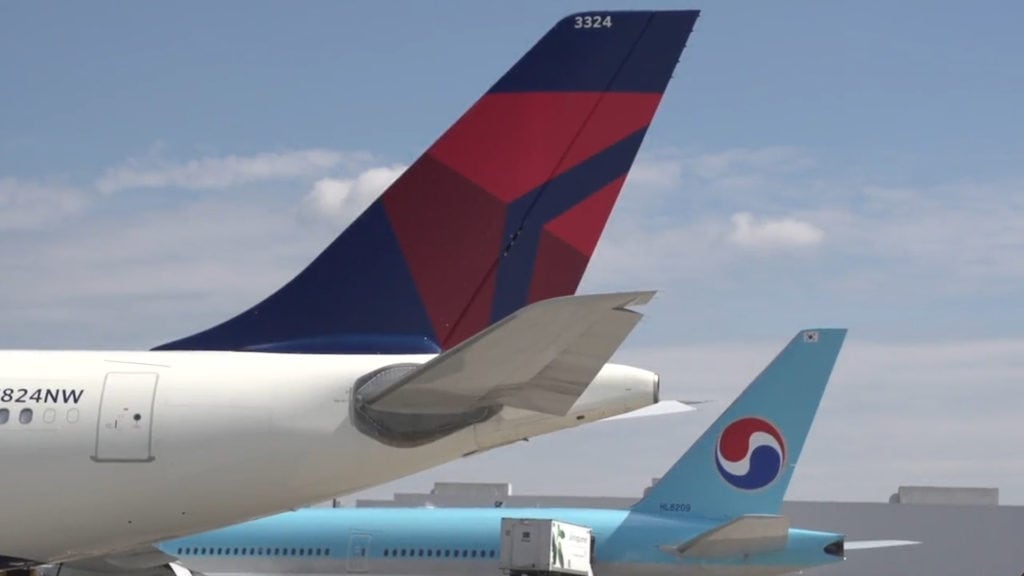
Photo courtesy of Delta Air Lines
We are working closely to ensure a seamless experience for both airlines’ customers, enhancing the overall travel experience for our shared passengers, especially since we fly directly to these hubs.
Lounge overcrowding is a growing concern worldwide. How has Korean Air managed this issue, especially in the Asian market, and what steps have been taken to ensure a premium experience for passengers?
At Korean Air, we proactively address this, particularly at our hub and two main gateway airports in the U.S. (Los Angeles and New York JFK), where our lounges are currently being renovated to enhance passenger experience.
At Incheon, we have significantly enhanced our lounge facilities by expanding the footprint threefold and doubling the seating capacity, ensuring a more comfortable experience for our travelers. The redesign includes dedicated family-friendly spaces alongside areas tailored for business professionals, promoting a seamless flow throughout the lounge.
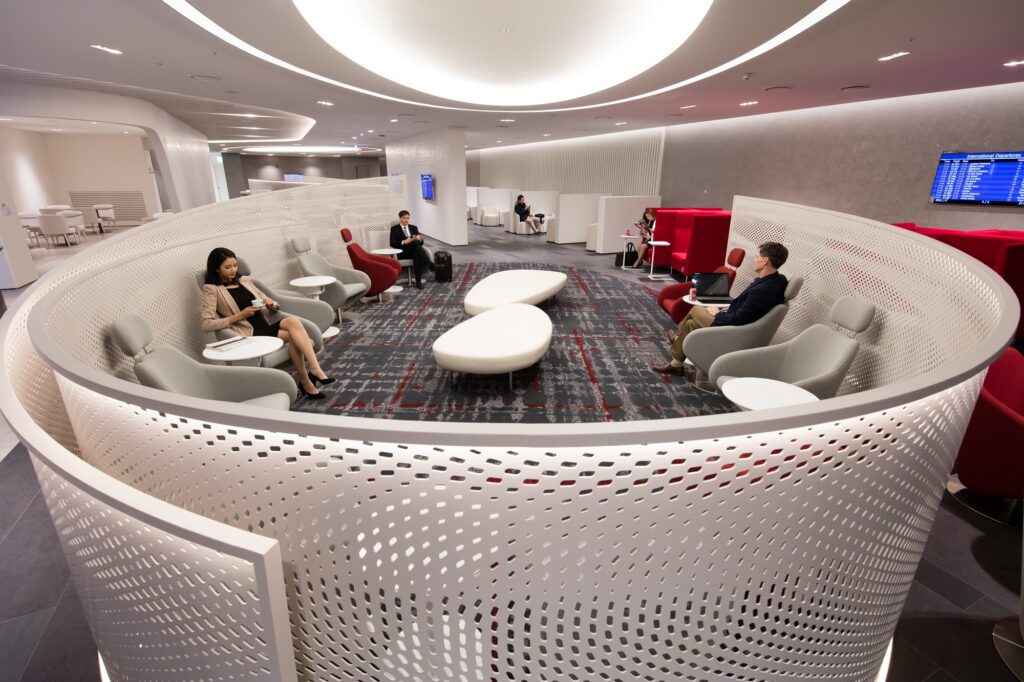
Photo: Miler Club lounge, Incheon Airport. Courtesy of Korean Air
We are also increasing our investment in IT systems to optimize lounge operations, including implementing a reservation system and congestion control measures to manage guest flow better. These initiatives are designed to deliver a premium experience, allowing passengers to relax and enjoy our lounges, even during peak travel times.
In your view, what does the future hold for airline lounges? What innovations or trends do you see shaping the next generation of airport lounge experiences? If you had the ability to create the perfect lounge, what features or services would it include to offer an unrivaled experience?
Great question! If I could design the perfect lounge, it would seamlessly blend comfort, wellness, and technology to provide a truly elevated experience for a variety of travelers—a destination by itself. The design would be timeless, with consistent elements across all Korean Air lounges—clean lines, natural materials, and soft lighting to create an inviting, calm atmosphere no matter where you are.
To engage all the senses, the lounge would have a carefully curated environment. For example, soothing background music could play softly throughout the space, while natural aromas—like lavender or citrus—enhance relaxation.
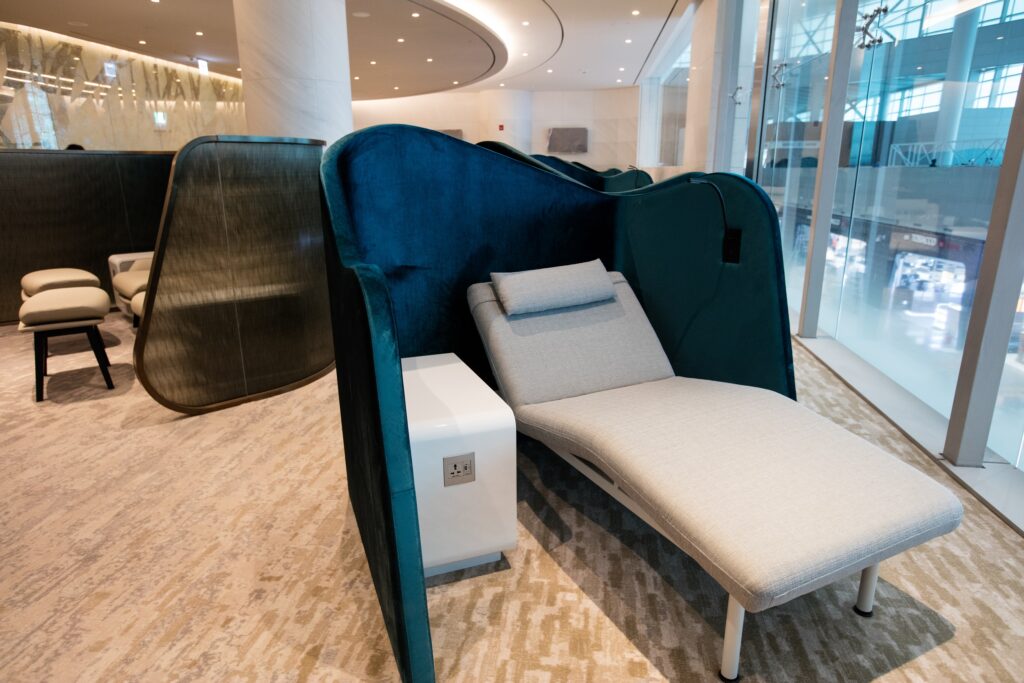
Photo: First Class lounge, Incheon Airport. Courtesy of Korean Air
Seating areas would be thoughtfully designed for comfort, offering both private spaces for quiet moments and open areas for socializing. The goal would be to make every guest feel at ease, whether they’re looking to relax or be productive.
In terms of wellness, the lounge would go beyond the typical offerings. For instance, there could be dedicated areas for massage treatments, with professional therapists available for short, restorative sessions. Yoga and meditation spaces could provide a tranquil escape for travelers looking to stretch or center themselves before a long flight. These wellness options would give guests the chance to truly unwind, not just wait for their next flight.
On the technology front, the lounge would feature state-of-the-art infrastructure, including high-speed Wi-Fi, wireless charging stations at every seat, and digital screens for easy access to real-time flight information. For those seeking entertainment, we would introduce immersive experiences using virtual and augmented reality—perhaps offering virtual tours of destinations or interactive games that align with the travel theme.
Food and beverage options would be varied and thoughtfully curated. For instance, alongside traditional Korean favorites, the menu would include vegetarian, vegan, and gluten-free options. Imagine being able to order a fresh, seasonal salad with locally sourced ingredients, or a warm, hearty gluten-free meal before your flight. For me, I appreciate a good cup of coffee and when I travel, I search for the best local independent coffee shops. I would include a barista corner that could serve bespoke coffee drinks.
Net net, the lounge would offer a balanced mix of personal comfort, wellness services, and high-tech features—creating a space that makes every moment spent there feel purposeful and tailored to individual needs. Whether you’re there to relax, work, or enjoy a meal, the lounge will deliver an experience that truly enhances your journey.
Thanks for opening up with this, David! Now, what do you find to be the most challenging aspect of your role at Korean Air?
One of the most challenging aspects of my role at Korean Air is managing our global lounge operations and ensuring we deliver a consistent, high-quality experience across all locations. With lounges and services spread across different countries, we operate in a wide variety of environments, each with its unique cultural expectations, logistical hurdles, and operational standards. This can make consistency a challenge.
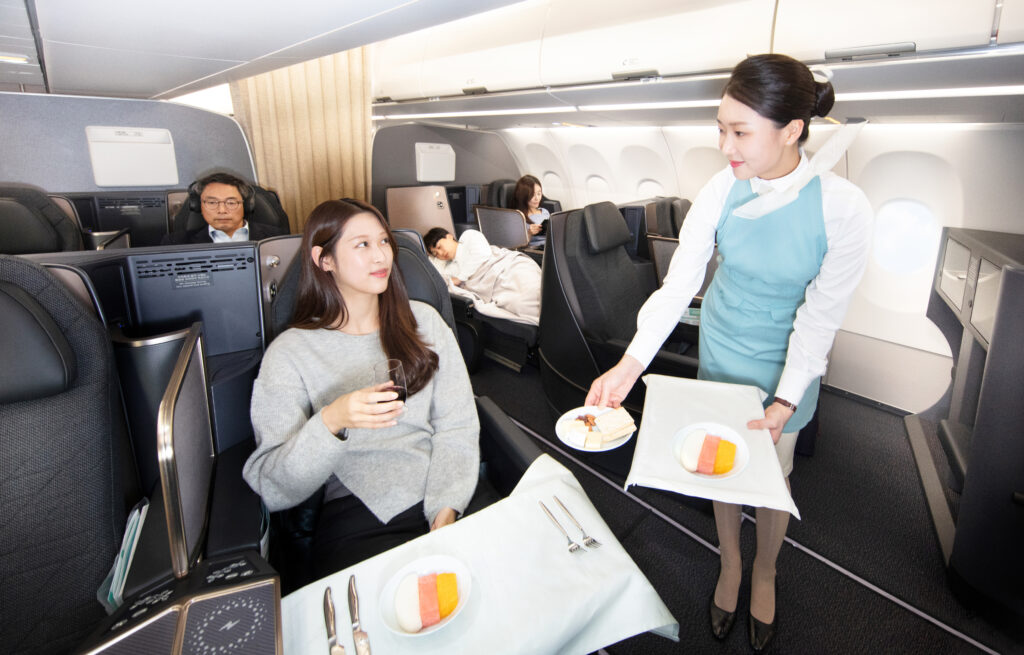
Photo: Airbus A321neo. Courtesy of Korean Air
However, these challenges also present valuable opportunities. In each location, we not only introduce passengers to the excellence of Korean Air but also share elements of Korea’s rich culture with travelers. At the same time, we embrace the local culture of each city we operate in, creating a blend of Korean hospitality and local flavors. It’s challenging to maintain that global consistency while incorporating local cultures, but it’s also what makes my role so fulfilling. This balance can be difficult to maintain, but when done right, it leads to a more meaningful and enriching experience for our passengers.
True, and thank you for sharing that. We all know that challenges come with satisfaction. What is the most rewarding part of your job, the one that brings you the greatest joy?
What makes this role rewarding is seeing our teams succeed in creating these experiences—providing not just a seamless service, but one that reflects both the values of Korean Air and the uniqueness of the destinations we serve
I’ve always felt that travel is the best form of education, allowing people to experience new cultures, meet new people, and broaden their horizons. I consider myself fortunate to play a small role in our guests’ journeys, taking them from a place they call home to a place that sparks their curiosity and opens their minds to new adventures.
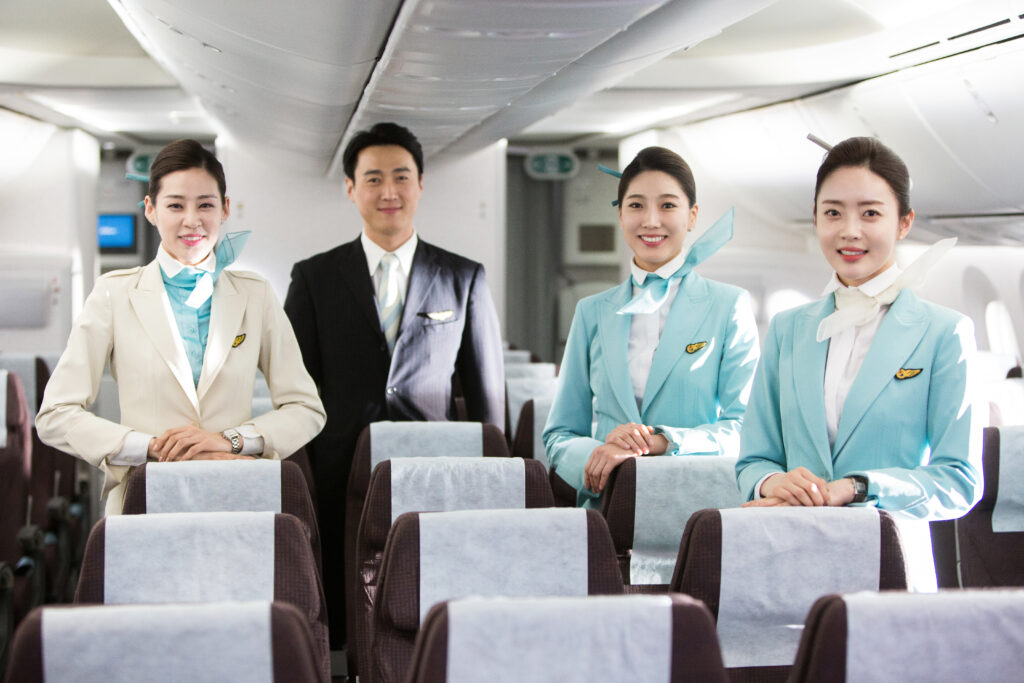
Photo: Courtesy of Korean Air
I take great pride in creating an environment that elevates their travel from routine to remarkable. It’s the small, thoughtful details—whether it’s a warm greeting, a personalized touch, or the ease of a seamless check-in—that make a positive impact. Knowing we’ve contributed something meaningful to their journey inspires me to keep pushing for excellence not only in flight but beyond it.
Equally rewarding is being part of Korean Air’s transformation, having the opportunity to bring my hotel management background to innovate within the airline industry alongside my talented team, ensuring that the legacy we’re building today will continue for years to come.


